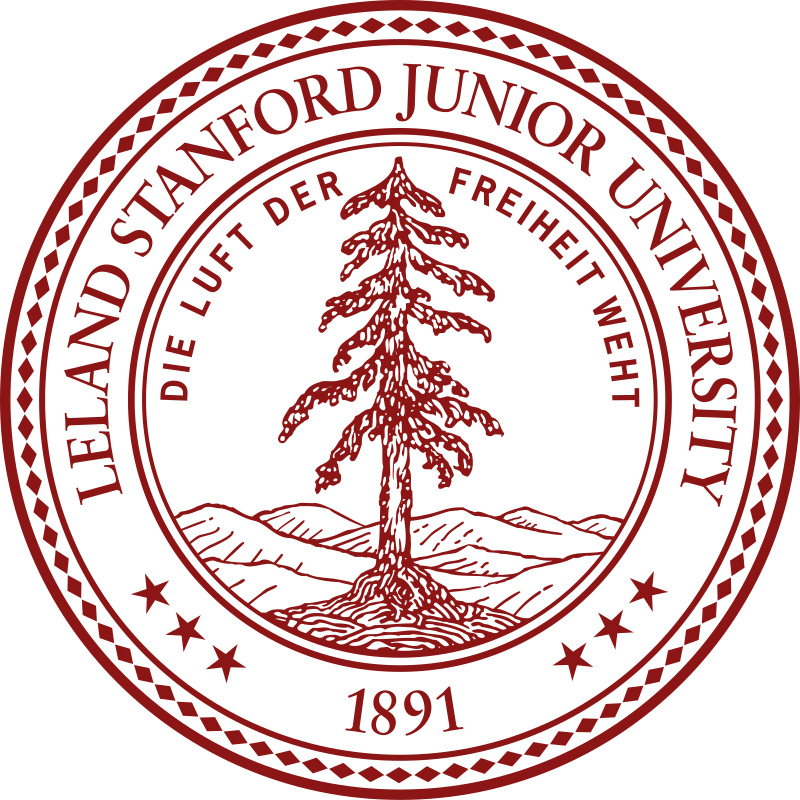Core modules
The structure of the course reflects the structure of the subject You will take core lecture modules (concentrated mainly in the first two ) which introduce and develop the fundamental concepts such as those of quantum theory and electromagnetism and cover the mathematics used in physics
You will also choose modules from lists of options These are largely concerned with seeing how the basic concepts can explain the phenomena we observe Examples include the light emitted and absorbed by stellar matter and the response of the liquids solids and gases which we meet on a daily basis to the mechanical electrical and thermal forces acting on them
In the first you take essential (core) modules In the second and third there is considerable freedom to choose modules By then you will have a good idea of your main interests and be well placed to decide which areas to study in greater depth In effect you design your own degree
Year One
Mathematics for Physicists
All scientists use mathematics to state the basic laws and to analyse quantitatively and rigorously their consequences The module introduces you to concepts and techniques which will be assumed by future modules These include complex numbers functions of a continuous real variable integration functions of more than one variable and multiple integration You will revise relevant parts of the A-level syllabus to cover the mathematical knowledge to undertake first physics modules and to prepare you for mathematics and physics modules in subsequent
Read more about the Mathematics for Physicists moduleLink opens in a new window including the methods of teaching and assessment (content applies to 2022 23 of study)
Classical Mechanics and Special Relativity
You will study Newtonian mechanics emphasizing the conservation laws inherent in the theory These have a wider domain of applicability than classical mechanics (for example they also apply in quantum mechanics) You will also look at the classical mechanics of oscillations and of rotating bodies It then explains why the failure to find the ether was such an important experimental result and how Einstein constructed his theory of special relativity You will cover some of the consequences of the theory for classical mechanics and some of the predictions it makes including the relation between mass and energy length-contraction time-dilation and the twin paradox
Read more about the Classical Mechanics and Special Relativity moduleLink opens in a new window including the methods of teaching and assessment (content applies to 2022 23 of study)
Physics Foundations
You will look at dimensional analysis matter and waves Often the qualitative features of systems can be understood (at least partially) by thinking about which quantities in a problem are allowed to depend on each other on dimensional grounds Thermodynamics is the study of heat transfers and how they can lead to useful work Even though the results are universal the simplest way to introduce this topic to you is via the ideal gas whose properties are discussed and derived in some detail You will also cover waves Waves are time-dependent variations about some time-independent (often equilibrium) state You will look at phenomena like the Doppler effect (this is the effect that the frequency of a wave changes as a function of the relative velocity of the source and observer) the reflection and transmission of waves at boundaries and some elementary ideas about diffraction and interference patterns
Read more about the Physics Foundations moduleLink opens in a new window including the methods of teaching and assessment (content applies to 2022 23 of study)
Electricity and Magnetism
You will largely be concerned with the great developments in electricity and magnetism which took place during the nineteenth century The origins and properties of electric and magnetic fields in free space and in materials are tested in some detail and all the basic levels up to but not including Maxwell's equations are considered In addition the module deals with both dc and ac circuit theory including the use of complex impedance You will be introduced to the properties of electrostatic and magnetic fields and their interaction with dielectrics conductors and magnetic materials
Read more about the Electricity and Magnetism moduleLink opens in a new window including the methods of teaching and assessment (content applies to 2022 23 of study)
Physics Programming Workshop
You will be introduced to scientific programming with the help of the Python programming language a language widely used by physicists It is quick to learn and encourages good programming style Python is an interpreted language which makes it flexible and easy to share It allows easy interfacing with modules which have been compiled from C or Fortran sources It is widely used throughout physics and there are many downloadable free-to-user codes available You will also look at the visualisation of data
Read more about the Physics Programming Workshop moduleLink opens in a new window including the methods of teaching and assessment (content applies to 2022 23 of study)
Quantum Phenomena
This module explains how classical physics is unable to explain the properties of light electrons and atoms (Theories in physics which make no reference to quantum theory are usually called classical theories) It covers the most important contributions to the development of quantum physics including wave-particle 'duality' de Broglie's relation and the Schrodinger equation It also looks at applications of quantum theory to describe elementary particles their classification by symmetry how this allows us to interpret simple reactions between particles and how elementary particles interact with matter
Read more about the Quantum Phenomena moduleLink opens in a new window including the methods of teaching and assessment (content applies to 2022 23 of study)
Astronomy
The Universe contains a bewildering variety of objects - black-holes red giants white dwarfs brown dwarfs gamma-ray bursts and globular clusters - to name a few The module introduces these and shows how with the application of physics we have come to know their distances sizes masses and natures The module starts with the Sun and planets and moves on to the Universe as a whole
Read more about the Astronomy moduleLink opens in a new window including the methods of teaching and assessment (content applies to 2022 23 of study)
Physics Laboratory
The module introduces experimental science and teaches the skills required for successful laboratory work These include how to work with apparatus how to keep a laboratory notebook how to handle data and quantify errors and how to write scientific reports The module also asks you to think critically and solve problems Initial experiments build core skills while later experiments explore important areas of physics
Read more about the Physics Laboratory moduleLink opens in a new window including the methods of teaching and assessment (content applies to 2022 23 of study)
Year Two
Statistical Mechanics Electromagnetic Theory and Optics
Any macroscopic object we meet contains a large number of particles each of which moves according to the laws of mechanics (which can be classical or quantum) Yet we can often ignore the details of this microscopic motion and use a few average quantities such as temperature and pressure to describe and predict the behaviour of the object Why we can do this when we can do this and how to do it are discussed in the first half of this module
We also develop the ideas of first electricity and magnetism into Maxwell's theory of electromagnetism Establishing a complete theory of electromagnetism has proved to be one the greatest achievements of physics It was the principal motivation for Einstein to develop special relativity it has served as the model for subsequent theories of the forces of nature and it has been the basis for all of electronics (radios telephones computers the lot)
Read more about the Statistical Mechanics Electromagnetic Theory and Optics moduleLink opens in a new window including the methods of teaching and assessment (content applies to 2024 24 of study)
Quantum Mechanics and its Applications
In the first part of this module you will use ideas introduced in the first module to explore atomic structure You will discuss the time-independent and the time-dependent Schrödinger equations for spherically symmetric and harmonic potentials angular momentum and hydrogenic atoms The second half of the module looks at many-particle systems and aspects of the Standard Model of particle physics It introduces the quantum mechanics of free fermions and discusses how it accounts for the conductivity and heat capacity of metals and the state of electrons in white dwarf stars
Read more about the Quantum Mechanics and its Applications moduleLink opens in a new window including the methods of teaching and assessment (content applies to 2021 22 of study)
Physics Skills
This module develops experimental skills in a range of areas and includes the design and testing of a functional electronic circuit The module also introduces the concepts involved in controlling an experiment using a microcomputer The module explores information retrieval and evaluation and the oral and written presentation of scientific material
Read more about the Physics Skills moduleLink opens in a new window including the methods of teaching and assessment (content applies to 2021 22 of study)
Mathematical Methods of Physicists
You will review the techniques of ordinary and partial differentiation and ordinary and multiple integration You will develop your understanding of vector calculus and discuss the partial differential equations of physics (Term 1) The theory of Fourier transforms and the Dirac delta function are also covered Fourier transforms are used to represent functions on the whole real line using linear combinations of sines and cosines Fourier transforms are a powerful tool in physics and applied mathematics The examples used to illustrate the module are drawn mainly from interference and diffraction phenomena in optics (Term 2)
Read more about the Mathematical Methods of Physicists moduleLink opens in a new window including the methods of teaching and assessment (content applies to 2021 22 of study)
Year Three
Physics Project
The project will provide you with experience of working in a research environment You will work normally in pairs on an extended project which may be experimental computational or theoretical (or indeed a combination of these) Through discussions with your supervisor you will establish a plan of work which you will frequently review as you progress In general the project will not be closely prescribed and will contain an investigative element
Read more about the Physics Project moduleLink opens in a new window including the methods of teaching and assessment (content applies to 2021 22 of study)
Communicating Science
Employers look for many things in would-be employees Sometimes they will be looking for specific knowledge but often they will be more interested in general skills frequently referred to as transferable skills One such transferable skill is the ability to communicate effectively both orally and in writing Over the past two you may have had experience in writing for an academic audience in the form of your laboratory reports The aim of this module is to introduce you to the different approaches required to write for other audiences This module will provide you with experience in presenting technical material in different formats to a variety of audiences
Read more about the Communicating Science moduleLink opens in a new window including the methods of teaching and assessment (content applies to 2021 22 of study)
Quantum Physics of Atoms
The basic principles of quantum mechanics are applied to a range of problems in atomic physics The intrinsic property of spin is introduced and its relation to the indistinguishability of identical particles in quantum mechanics discussed Perturbation theory and variational methods are described and applied to several problems The hydrogen and helium atoms are analysed and the ideas that come out from this work are used to obtain a good qualitative understanding of the periodic table In this module you will develop the ideas of quantum theory and apply these to atomic physics
Read more about the Quantum Physics of Atoms moduleLink opens in a new window including the methods of teaching and assessment (content applies to 2021 22 of study)
Optional modules
Optional modules can vary from to Example optional modules may include
Condensed Matter Physics
Scientific Computing
The Earth and its Atmosphere
Electrodynamics
Plasma Physics and Fusion
The Standard Model
Galaxies and Cosmology
Statistical Physics
Physics of Life and Medicine
Black Holes White Dwarfs and Neutron Stars
Show less














